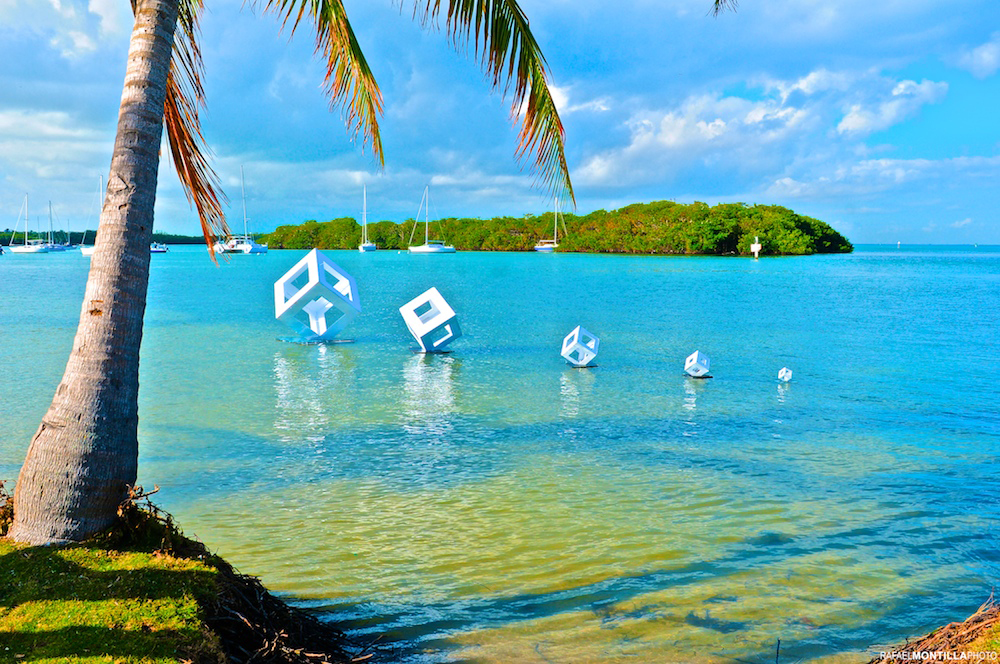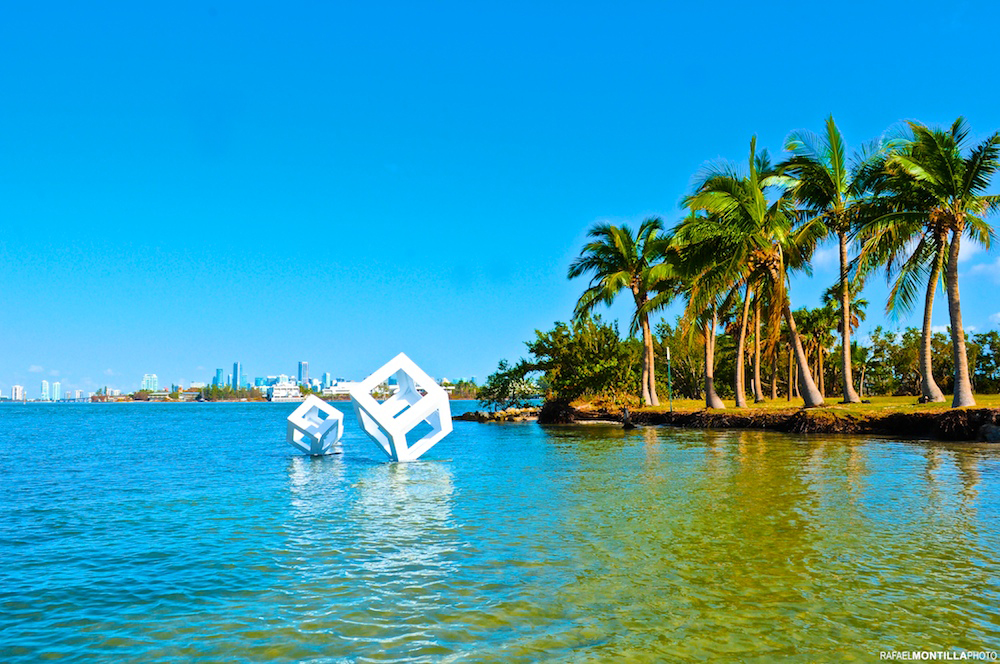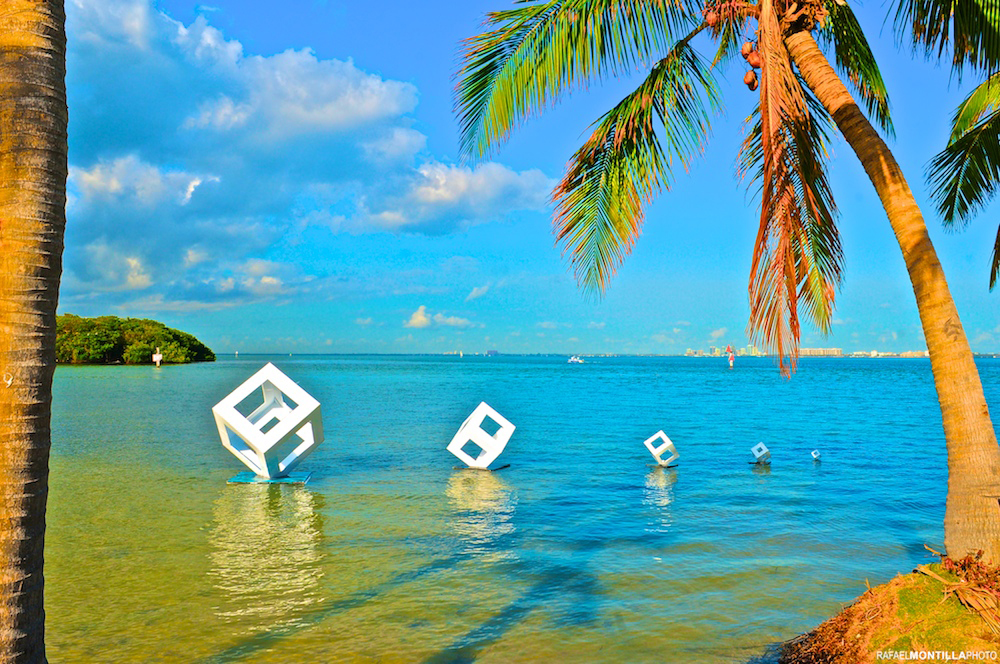Floating Cubes
Land Art
These floating cubes find their roots in the inspirational works of Venezuelan artists Jesús Soto and Alejandro Otero. My connection with their creations dates back to my childhood when my father introduced me to the Museo de Bellas Artes and the Galería de Arte Nacional in Caracas. There, I encountered Soto’s Penetrables for the first time—a masterpiece where the grandeur of a cube is dematerialized through suspended strings. Soto’s intention allowed viewers not only to perceive but also to participate in the artwork. He eloquently stated, “When you enter a Penetrable, you are in a whirlpool of light, a total abundance of vibrations. The Penetrable is a kind of concretion of that abundance in which I make people move and make them feel the body of the space.”
The works of Alejandro Otero, prominently displayed within the Jesús Soto Museum of Modern Art in Ciudad Bolívar, Venezuela, continued to shape my creative journey. Notably, “Four Blades Mill” (1985) stood as a testament to Otero’s ability to deconstruct the faces of a cube. This concept was magnificently realized in more giant sculptures such as “Abra Solar” in Plaza Venezuela, Caracas. A cube balanced on one corner, “Four Blades Mill,” harnessed the wind to set four aluminum blades in motion, connecting the public to the essential energies of our planet. Otero’s assertion, “art is a way of reinforcing life,” finds monumental embodiment in “Abra Solar.”
Drawing from the profound impact of Soto and Otero’s works, I envisioned placing sculptural pieces on the sea’s surface—an embodiment of my coastal upbringing and intimate understanding of its vastness. I aspired to manifest the otherwise unseen void of the sea, to make its emptiness visible and tangible. My initial sketches depicted cubes adrift on water, a concept I refined over the years. As I endeavored to bring this vision to life, I encountered challenges in maintaining the upright balance of the cubes on a corner over the sea.
Throughout this journey, I garnered the curious attention of passing police officers who observed my tireless pursuit. One day, they engaged me, asking if I believed I could achieve my goal. With conviction, I assured them that success was on the horizon. My efforts culminated by stabilizing the giant cube atop a vertex on the water, an accomplishment that paved the way for the graceful floating of the subsequent cubes. The Key Biscayne Marina, a cherished location known for its breathtaking sunsets, became the site for the installation. I realized my dream as I positioned five cubes in a decreasing size progression.
After the installation, fate led me to encounter one of the officers who followed my progress. At a gas station, he asked if I had succeeded in suspending the cube above the sea. With a sense of fulfillment, I shared my achievements and exhibited the installation photographs.
My deep affinity for public art stems from its unique ability to engage many people, particularly the young. Beyond the pleasure it brings, public art catalyzes awareness, urging observers to recognize the interconnectedness of every being, whether human, animal, plant, or microorganism, with nature and the cosmos. This awareness propels us to preserve these precious elements for generations to come.



